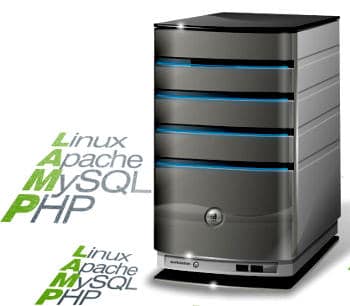If you have worked in web design, you have probably heard of the LAMP stack on at least one occasion. Today, we are going to explain what it is — and why you should know about it.
Whether you are a novice webmaster, a designer or a blogger, you have probably heard of the LAMP stack in passing. But do you know what it is, exactly? If not, you should — it is one of the most common (and critical) website ‘stack’ platforms available in the present market.
So let’s back up a bit. We should start by explaining the basics first.
‘Stack’ platform?
In broad strokes, a stack platform is basically a collection of software melded into a unified whole to perform a specific task. It can be used as the foundation for a broad range of different applications and services. Generally speaking, Stacks are named through an acronym consisting of their core components.
In the context of the Web, a stack is generally used for development purposes. It consists, at a minimum, an operating system, a programming language, database software and a web server. The operating system serves as the ‘brain’ of the Stack, while the database software stores all information generated and used by a website. The web server, meanwhile, serves the site’s front-end to visitors.
Let’s make things a little more specific. The LAMP stack is one of the most popular open-source web service and development stacks on the Internet, well-suited for dynamic websites and web applications. The acronym refers to its four core components, namely Linux, Apache, MySQL and PHP, that jointly build the term “LAMP”.
The most important thing about LAMP is that it is entirely open-source. Its components are freely available to anyone who might wish to use them — allowing webmasters to easily avoid vendor lock-in and develop for the web without having to put a large portion of their budget towards said development. Because of this, the stack has also become quite popular in the web development space, and some variations of LAMP are included in the repository of most Linux distros.
LAMP is also highly modular, and its components are easily swapped out for other open-source solutions as needs demand. Because of this modularity, there are multiple variants of LAMP, including WAMP, AMP, WIMP, MAMP and SAMP. Many of these variants simply use a different operating system from LAMP, though others use different database software or a different web server.
There’s a lot more we could write about LAMP’s different variants. However, let’s move on and talk about how each component specifically serves the overall stack.
LAMP stack’s components
Linux
Linux still stands above all as a titan of the open source collaboration and an example of what the open source community can do if they put their heads together. It is an incredibly diverse operating system, with distributions designed for everything from a desktop interface to a server backend. Currently, Debian and Ubuntu are the two leading distributions. However, RHEL, Fedora and CentOS are also the prominent ones.
Apache
Apache is what’s known as an HTTP Server. It is designed to receive requests from a client’s browser and then respond to those requests. In plain English, it means when you access a site’s URL, it is Apache that serves up the homepage and all its content.
Although Apache is one of the oldest HTTP servers on the web (Apache traces its roots back to the mid 90s), it remains one of the most popular, operating on approximately 52 percent of active websites globally. According to the recent figures by Netcraft, Apache’s closest competitor, Nginx, has a total share of only 14.36 percent.
Like the other components of LAMP, Apache is completely open-source, developed by a community of developers working with the Apache Software Foundation. It is designed for modularity, and there are many different features and functions which can be implemented as compiled modules.
MySQL
A relational database management system, MySQL uses structured, ordered mathematics to organise data — particularly the relational model proposed in 1969 by Edgar F. Codd. Using MySQL, a webmaster can link information from different ‘tables’ or different groupings of data. Although many LAMP stacks still use relational databases, other sites have moved away from them to an extent, replacing MySQL with newer database developments such as MongoDB.
PHP
Last but certainly not least, PHP is a server-side scripting language — meaning all scripts run entirely on your server and not on the client’s device. It can easily be embedded into HTML or HTML5 markup and is designed to be general purpose. As such, it is readily compatible with multiple web development frameworks, content management systems and template systems. It is the core development language of some of the web’s leading platforms, including WordPress.
Interestingly, HTML is widely regarded as one of the simplest scripting languages to learn, making it a perfect place to start if you are looking to get into web development.
What does any of this have to do with me?
Simple. Nearly every hosting provider you will work with uses either LAMP itself or a variation of the stack for their services. A passing familiarity with the stack and its basic functions is important if you want to know how your website works behind the scenes, and even more. So if you want to move away from an existing content management system towards a solution that offers you a bit more control over your site, you need to work with the LAMP stack.
Either way, you have now been given a basic overview of the LAMP stack. What you do with this knowledge is entirely up to you.












































































